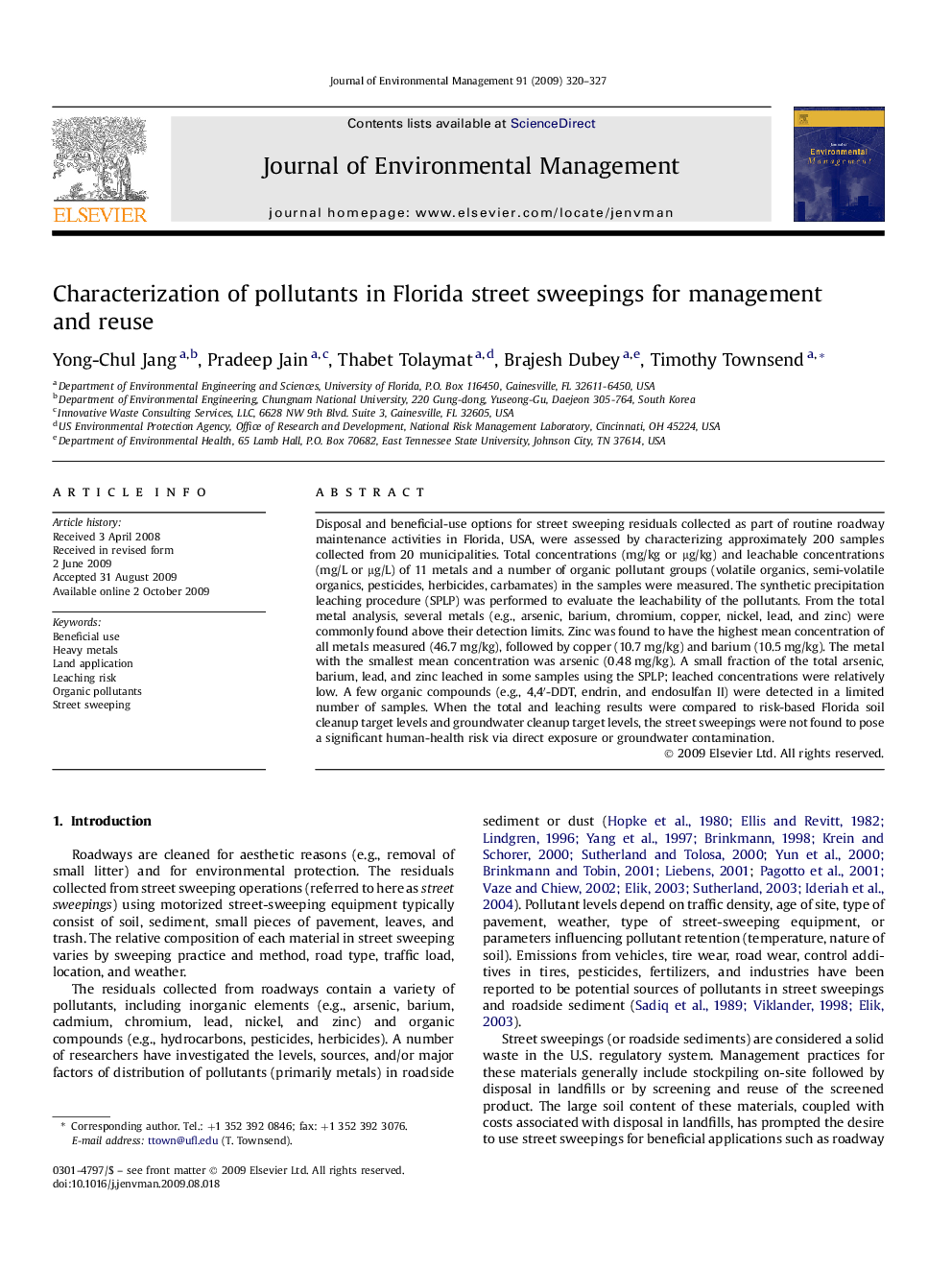| Article ID | Journal | Published Year | Pages | File Type |
|---|---|---|---|---|
| 1057808 | Journal of Environmental Management | 2009 | 8 Pages |
Disposal and beneficial-use options for street sweeping residuals collected as part of routine roadway maintenance activities in Florida, USA, were assessed by characterizing approximately 200 samples collected from 20 municipalities. Total concentrations (mg/kg or μg/kg) and leachable concentrations (mg/L or μg/L) of 11 metals and a number of organic pollutant groups (volatile organics, semi-volatile organics, pesticides, herbicides, carbamates) in the samples were measured. The synthetic precipitation leaching procedure (SPLP) was performed to evaluate the leachability of the pollutants. From the total metal analysis, several metals (e.g., arsenic, barium, chromium, copper, nickel, lead, and zinc) were commonly found above their detection limits. Zinc was found to have the highest mean concentration of all metals measured (46.7 mg/kg), followed by copper (10.7 mg/kg) and barium (10.5 mg/kg). The metal with the smallest mean concentration was arsenic (0.48 mg/kg). A small fraction of the total arsenic, barium, lead, and zinc leached in some samples using the SPLP; leached concentrations were relatively low. A few organic compounds (e.g., 4,4′-DDT, endrin, and endosulfan II) were detected in a limited number of samples. When the total and leaching results were compared to risk-based Florida soil cleanup target levels and groundwater cleanup target levels, the street sweepings were not found to pose a significant human-health risk via direct exposure or groundwater contamination.
